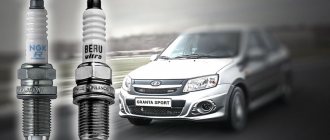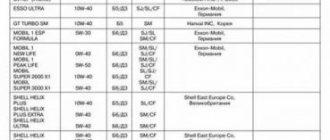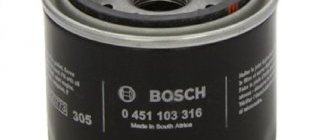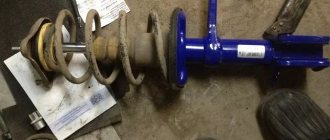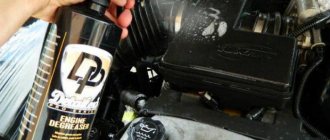The engine is one of the most important elements in a car. It is the design of the engine, its characteristics and reliability indicators that motorists put at the forefront when choosing a car. Nowadays, in addition to engines, other elements are important, such as electronics, gearbox and chassis, but with the development of disassembly and qualified repair services, these elements are increasingly fading into the background. Availability of spare parts and availability of repairs affect. Motors still remain the most complex part in a car, especially when it comes to domestic cars. Therefore, in our article we will analyze in detail the entire family of Lada Xray engines.
general information
On Lada Xray models, engines are available in three variations, but their general design is similar: gasoline inline four-cylinder units, with 4 valves per cylinder (16 valves in total) and two camshafts. True, this is where the similarities between the engines end. Considering the general characteristics of the Lada Xray, the engines installed on the model provide good power and torque, which is quite enough for everyday city use.
Let's take a closer look at which engines are equipped with x-rays and what are their main differences. However, before this it is worth mentioning that not all car models and trim levels are equipped with domestic power units. It will not be a secret for advanced car enthusiasts that new Lada models are created on the basis of the B0 platform. And since AvtoVAZ assembles models using Renault-Nissan technologies, many engineering solutions are borrowed from these manufacturers. The motor in this case was no exception, so AvtoVAZ installs the Nissan engine on the Xray in some trim levels.
HR16DE and its features
This engine, which you can get with the new Lada X-Ray, has the same volume - 1.6 liters. But with a similar volume it has more power, which is 110 horsepower. HR16DE was developed for a Russian car by the friendly concern Renault-Nissan. It has proven itself on some models of these manufacturers and is widely known throughout the world. Therefore, we can say with confidence that the Lada Xray has a world-class unit. The new engine has a number of fundamental differences in relation to VAZ devices, which are equipped with cast iron blocks and conventional belts. The unit has an excellent reputation and promising technical characteristics. However, time will tell us which option is better.
HR16 is equipped with an aluminum cylinder block. The cylinder head is made of aluminum alloy. Instead of a timing belt, this device has a stronger and more durable metal chain. The engine is made without hydraulic compensators, but at the same time, it is equipped with a system for changing the gas distribution phases. Each cylinder has two injectors.
The HR16 engine is installed in the Lada X-Ray car in combination with a French gearbox from Renault. Based on reviews from car enthusiasts, we can conclude that the HR16 has excellent dynamics and works flawlessly. Engine characteristics:
- volume – 1598 cm3;
- has 4 cylinders, 16 valves;
- instead of a timing belt, a chain is used;
- the cylinder has a diameter of 78 millimeters;
- power – 110 hp
To reach a speed of one hundred km/h from zero, the Lada Xray will take 10.3 seconds. And the maximum speed is 171 km/h.
Motor from Nissan in Lada X Ray from the factory!
The news about the appearance of the X-ray with a Nissan engine inspired many fans of the brand, since VAZ engines have never been distinguished by excellent quality and reliability. And now there is an alternative, a massive and reliable one. The Nissan engines with which AvtoVAZ equips new models have long been known among car enthusiasts, since the origins of the creation of this unit date back almost to the beginning of the 2000s.
The model of this power unit is H4M, which is essentially a converted version of the Nissan HR16DE engine. This unit appeared on the market in the early 2010s and during this time has proven itself well among servicemen and owners of Renault Sandero, Logan, Duster, etc. Since 2015, full-scale production of the Lada X Ray with Nissan engines began, although the name of the engine itself was changed to N4Mk.
The displacement of the N4Mk engine is the classic 1.6 liters, and the power of the Lada X Ray with a Nissan engine is 110 hp, and the torque varies at around 146-148 Nm. Structurally, the H4Mk is an aluminum cylinder block and an aluminum cylinder head. The valves in the cylinder head are located on classic mechanical pushers, and the timing mechanism is carried out through the use of a chain in the design. There are two camshafts in the head, and there is a phase regulator on the intake shaft. The fuel injection system is electronic, with two injectors per cylinder.
The xray with the H4Mk engine has proven itself well over the years. The engine is reliable and maintains its service life of 200+ thousand without any problems, taking into account regular maintenance and careful operation. Of course, we can’t do without sores:
- with regular downtime in traffic jams or low mileage, oil scraper rings suffer;
- due to the design, it is necessary to regularly adjust the valve clearance;
- The timing chain is stretched.
Technical characteristics and design features
All power units of the new model are quite modern and meet all current criteria that are presented for this segment.
VAZ-21129
This is a domestic gasoline engine, produced for quite a long time and also installed on other AvtoVAZ models, including the Lada Vesta.
Tuning:
- Potential – 400+ l. With.
- Without loss of resource - 150 l. With.
Engine X-Ray VAZ 21129.
The Lada X-Ray VAZ-21129 engine was created on the basis of the VAZ-21127 series engine, which is intended for the Priora model. A number of changes and improvements have been made to it. The most significant is the use of a set of flaps in the intake manifold, through which its length is changed, which guarantees operation at low and high speeds in optimal mode. In addition, engineers abandoned the mass air flow sensor in the engine design. Instead, two other devices were installed - air temperature and absolute pressure sensors. Such a solution provides the possibility of more complete control over the combustible mixture, and also eliminates the possibility of “floating” speed in idle mode.
Behind the usual volume of 1.6 liters and 16 valves, there are many nuances hidden.
Also in the design of the engine, new solutions were applied to the suspension of the unit, which is installed on a subframe, and changes were also made to the exhaust and intake systems. These measures guaranteed the engine, among other things, a reduction in operating noise, as well as a reduction in toxicity and fuel consumption.
This story tells in detail about the VAZ 21129 engine:
HR16DE
The Renault-Nissan H4M-HR16DE engine was provided by AvtoVAZ's partners from Alliance Renault Nissan. It has been produced for quite a long time and is successfully installed on many other models of French and Japanese companies - Nissan Tiida, Nissan Wingroad, Nissan Note, Lada Vesta, Nissan Qashqai and others.
X-Ray HR16DE engine in all its glory.
- volume – 1,598 cm³;
- configuration – in-line;
- location – transverse;
- number of cylinders – 4;
- number of valves – 16;
- power type – distributed fuel injection with electronic control;
- max power – 110 l. With. (81 kW) at 5,500 rpm;
- max torque – 150 Nm at 4,000 rpm;
- timing drive – chain;
- number of camshafts – 2 (DOHC type);
- dynamics – 11.1 sec.;
- max speed – 181 km/h;
- compression ratio – 10.7 units;
- cylinder diameter – 76 mm;
- piston stroke – 88 mm;
- environmental standards – Euro-4/5;
- fuel – AI-92/95;
- fuel consumption (city/highway/mixed mode) – 8.9 l/6.8 l/5.6 l.
Tuning:
- Potential – 150+ l. With.
- Without loss of resource - 125 l. With.
This Lada X-Ray power unit has several features. The most characteristic is a decrease in power - while on other models it varies from 114 to 118 hp. s., then in the case of X-Ray it was reduced to 110 hp. p., what was done in order to adapt this engine to the realities of Russia and other CIS countries.
The use of a chain in the timing drive makes it a priori more reliable.
So, instead of the usual belt for Lada owners, a chain is used in its design, which significantly increases reliability, because it does not break and does not stretch quickly. There are no modern hydraulic compensators - instead of them there are ordinary adjustable valves. However, the pusher adjustment procedure will not be required before 80,000 - 100,000 km. Among other features, one can highlight the use of a complex for changing valve timing, fixing the phase shifter directly on the intake shaft, the presence of a pair of injectors in each cylinder, and also the use of an electronic throttle valve.
Refusal of hydraulic compensators results in the need to adjust the valves.
In addition, during the modernization process, the friction indicators of the components of the Lada X-Ray power unit were reduced. This was achieved through the use of fluorine coating in the chain guide, polishing (mirror polishing), and machining of the crankshaft. At idle, losses (fuel and pumping) have been reduced, which is ensured by increasing the C-VTC conversion angle, as well as by recalculating the control (temporary).
Xray with VAZ engines
AvtoVAZ decided to please potential X Ray buyers and released several new engine models:
- VAZ engine with index 21129;
- VAZ engine with index 21179.
Let's look at these Lada X-ray engines and figure out which one is better, more reliable and more economical. So, the origins of power units 21129 and 21179 begin with the release of VAZ models of the 10th family. The general design of the engines has not changed much since then: displacement from 1.4 to 1.6 (and for 1.8 on unit 179) with 4 valves per cylinder and two camshafts, timing mechanism - belt, fuel type - gasoline.
With each new VAZ model, engineers refine these engines, trying to find the optimal balance of power and reliability. Since there are no fundamental changes in their design, in terms of maintainability, everything is excellent with these motors. Now on the market there is simply a myriad of parts for these power units.
Innovations Lada xray with VAZ-21129 and VAZ 21179 engines
Among the innovations that significantly separate the 129 engine from its predecessors, it is worth mentioning the presence of a technological intake system. For the first time in the history of AvtoVAZ, designers have developed and mass-produced intake manifolds with variable intake geometry. This system works as follows: at low speeds, air from the filter enters the engine along a long path, thereby ensuring optimal operation of the internal combustion engine. At high speeds, a mechanism installed in the manifold changes the path of air from the filter to the engine and sends it along a short path, thus achieving good filling of the cylinders even at speeds above 5000. This technological solution allowed engineers to “remove” an additional 8 liters from the engine. With. without serious intervention in the design of the cylinder head and cylinder block. The throttle valve has also changed; now, instead of the archaic cable mechanism, the throttle is controlled by an electronic gas pedal.
In addition to the technologically advanced intake manifold, the placement of the power unit has also undergone changes. Due to the use of the B0 platform, these engines began to be installed not on the body, through separate cushions, but on a subframe. True, advanced car enthusiasts did not greatly appreciate this design solution, since with this arrangement it is necessary to use additional xray engine protection.
To make the motor last a long time
Minimal engine wear requires certain conditions to be met. It is important to know exactly how much oil is in the engine. This is the only way you can avoid the unpleasant process of moving parts in the motor rubbing against each other. This indicator directly depends on the presence of the required amount of oil in it. This indicator depends on the type of internal combustion engine used in the crossover. Motors 21179 and 21129 will require oil of a compatible brand and viscosity in a volume of 4.2 liters. For the HR16DE (H4M) internal combustion engine, this figure will be slightly more – 4.3 liters.
It is unacceptable for the oil level to drop below o or exceed the “max” indicator. They are applied to a special dipstick to measure the amount of oil in the engine. Always check the level only when the car is parked on a level surface and with the engine turned off. The procedure is performed at least 2 times every 14 days. If there is the slightest doubt about the correctness of the measurements, they should be repeated as soon as possible.
Xray with VAZ-21129 engine
Lada hrey with a VAZ-21129 engine cannot boast of serious power indicators. With the 129th engine, the car’s power is 106 hp. at 5800 rpm, and torque is at 148 Nm at 4200 rpm. For the modern market these are very mediocre indicators, but despite such characteristics the car turned out to be more or less reliable compared to the version with the 179 engine. AvtoVAZ testers set the maximum speed mark on the track at 172 km/h, and the maximum is determined by electronic restrictions and the design of the gearbox. Advanced car enthusiasts know that they can overcome this mark by flashing the ECU, cutting out catalysts and replacing camshafts, but is this necessary for the average user? The car travels its 130-140 km calmly and confidently; of course, parasitic noise appears in the cabin, but this is due to the general sound insulation, and not to the engine.
Problems with LADA XRAY engines.
Motorists note that thanks to the modifications, the operation of the 21129 power unit has become more stable compared to its predecessors. However, the entire set of problems could not be solved:
- The main drawback remains with the modified engine - the valve continues to bend when the timing belt breaks;
- The problems of unstable idle speed and starting a cold engine are not so pronounced, but sometimes they appear. Often the solution is achieved by testing and adjusting the electronics and reflashing.
- The increasing complexity of the solutions used by the ECU has also brought some negative effects - throttle valve malfunctions are observed when the electronic gas pedal is operating.
Not everything is going smoothly with unit 21179. During life tests and during operation, motorists complain about:
- Oil consumption on new Lada XRay cars is extremely high. The issue has not been resolved; the manufacturer's technical services claim that consumption will decrease with longer use (this actually happens).
- More than 20% of buyers had to replace a burst cooling system expansion tank. There were no such cases in configurations with a 1600 cc engine.
- Minor (not affecting the operation of systems) failures with complex electronics are common, in particular, various indicators light up (for no serious reason). There is no official decision yet.
- Car owners also complain about the operation of the phase shifter.
Even the H4M-K, perfected to the smallest detail, brings surprises:
- Difficulty starting in cold weather. In addition, a running unit may stall. The manufacturer recognizes this unpleasant feature.
- The engine stalls in any mode. The problem is with the quality of the ignition unit relay (even a batch of cars was recalled). Replacement fixes the problem.
- A whistling noise appears during operation. The phenomenon is ordinary, the cause is weakening or wear of the alternator belt.
Video with a short review.
Xray with VAZ-21179 engine
Before releasing the model on the market, auto reviewers and auto publications wondered for a long time which engine in the Lada X Ray would be the most powerful. And in 2015, a completely new power unit saw the light - VAZ-21179, with a volume of 1.8 liters, a power of 122 hp (at 6000 rpm) and a torque of 170 Nm (at 3700 rpm). At the moment, this is the most powerful engine in the VAZ line, ever mass produced. Structurally, the cylinder block is not very different from the predecessors of the 10th Lad family. Compared to the 129 engine, the design of the 1.8 liter unit has been simplified in terms of intake - it uses a conventional plastic intake manifold.
During development, the height of the block was increased, which provided a volume of 1.8 liters, the crankshaft was replaced with another one with a larger crank radius, and the connecting rods were also used with others - with a higher height. The pistons in the new engine began to use foreign ones, with developed oil scraper rings and graphite coating. Among other innovations, a phase shifter also appeared, and all parts of the connecting rod and piston group were made lighter, which had a positive effect on power and fuel consumption.
True, high power and torque brought certain problems to this motor. With increased power, the thermal load of the motor also increased. The designers tried to correct this shortcoming by improving the cooling system, but it was not possible to completely get rid of the problem. 179 motor does not tolerate prolonged loads and requires careful attention to the cooling system.
Possible internal combustion engine options for Lada X-Ray
Lada X-Ray has three engines that are offered to customers to choose from:
- VAZ-21129 - this option is used in the basic version of the Lada X-Ray and has a power of 106 horses;
- HR16DE – engine from foreign partners, is reliable and has 110 hp;
- VAZ 21179 is the most powerful engine of those installed on the Lada Xray, it has 122 hp.
All engines that are installed on the Lada X-Ray run on gasoline, and the most powerful version has a special VAZ automated manual transmission.

